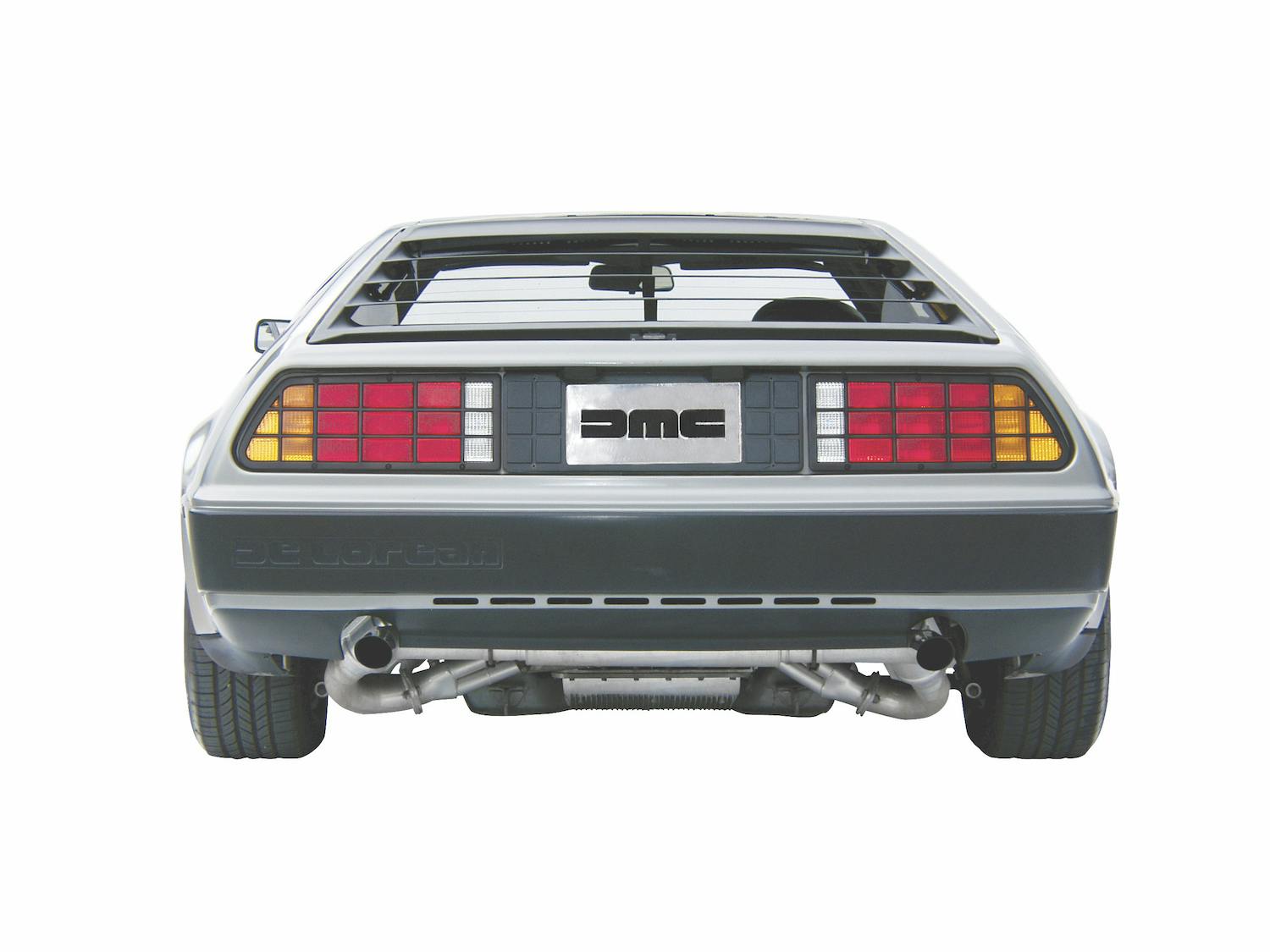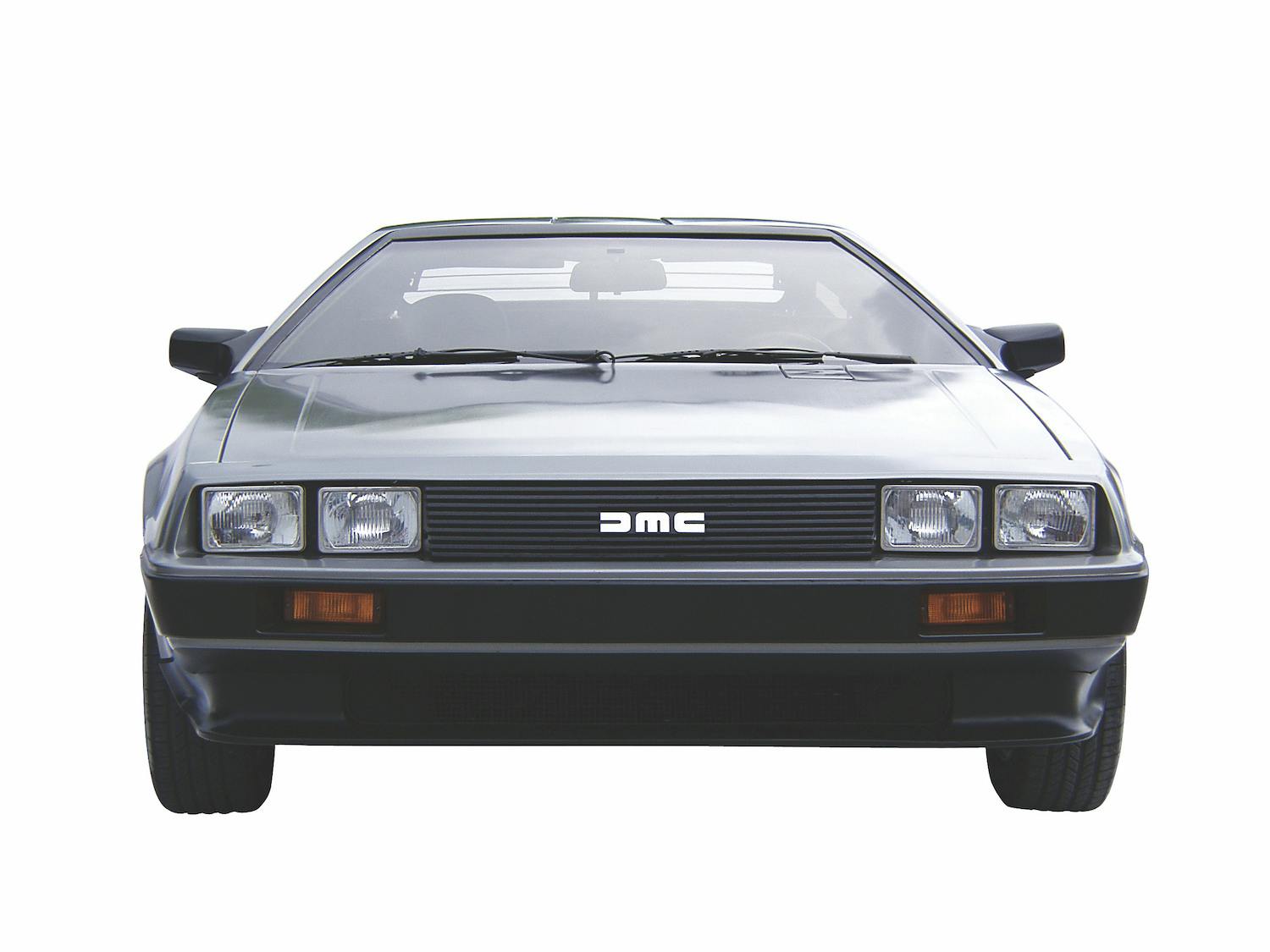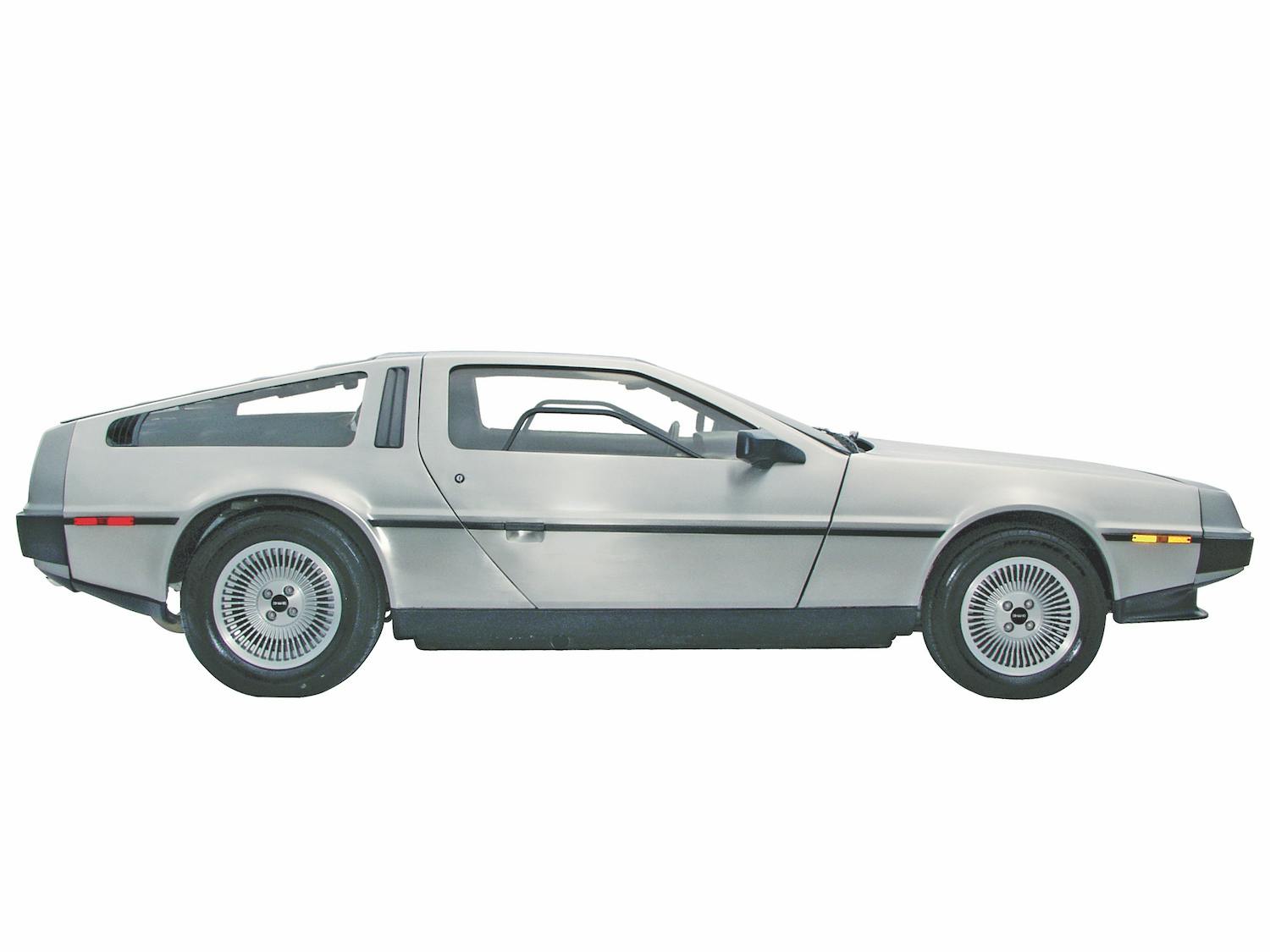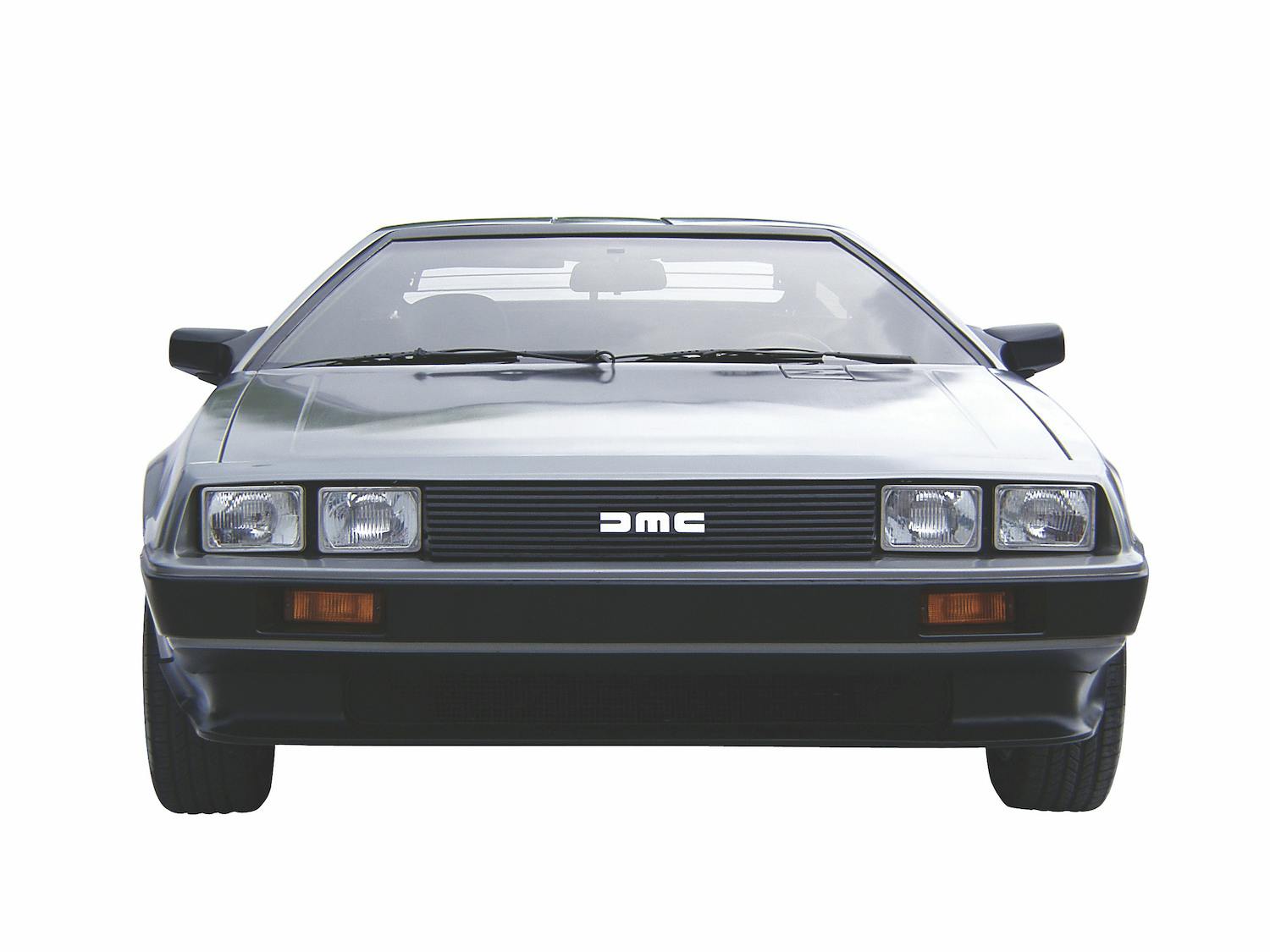Media | Articles
Get hyped for DeLorean’s two-pronged return
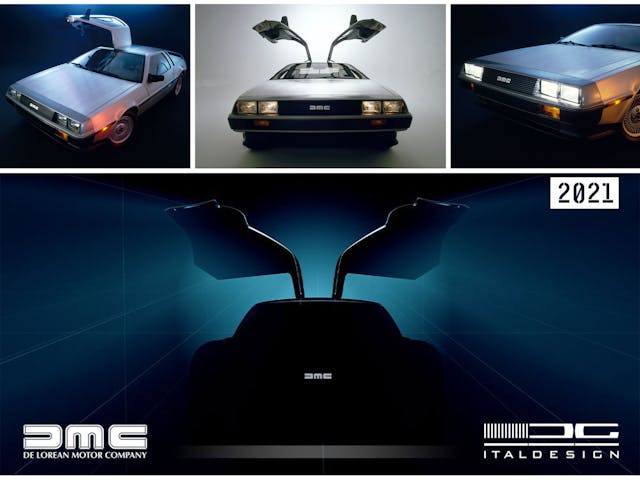
DeLorean continues to tease us with prospects of a rebirth, which now appears to be playing out twofold.
A shadowy, gullwinged silhouette shown on Italdesign’s Twitter account is the product of a joint venture collaboration the Italian design house and Humble, Texas-based DMC, which will proceed independently of the planned limited run of “new,” retro-style DeLoreans. We spent some time on the phone with DMC vice president James Espey to gather more information on this mysterious trans-Atlantic collab, and to check in for an update on the delayed “new” DMC-12s.
#DeLorean DMC-12 turns 40 this year! This picture was shot on the 21st January 1981, when the very first production model was released. What a better way to celebrate an icon of automotive history than a sneak peek of the (near) future?
Stay tuned for more… #visionbeyondtime!? pic.twitter.com/JKcHsMjgOy— Italdesign (@italdesign) January 21, 2021
The teaser on Italdesign’s Twitter post may be of a pure concept car, and while it wears the DMC logo and the characteristic top-hinged doors, don’t expect it to be a grandchild of the DMC-12. Think second cousin twice-removed.
Espey wasn’t able to share much more on the Italdesign project, but he did clearly differentiate it from the cars that DMC plans to produce under the Low Volume Motor Vehicle Act (LVMVA). “Those regulations stipulate that a vehicle must resemble a vehicle made at least 25 years ago,” says Espey. “I would not expect a Italdesign project to fall under that criteria, should one be produced in any way—whether strictly a concept vehicle, or one with some plan for production.”
Marketplace
Buy and sell classics with confidence
The “new” DMC-12s, according to Espey, are still stuck in limbo thanks to federal bureaucracy and (to a lesser extent) COVID-19.

The LVMVA is part of the Fixing America’s Surface Transportation (FAST) Act, a $305B bill passed by Congress and signed into law by President Barack Obama in December of 2015. Found in section 24405 of that bill, the LVMVA is essentially a list of instructions for NHTSA and the EPA. The LVMVA didn’t establish any programs the day it was signed; it provided the goals, but left the execution of them up to two other (massive) federal agencies. Quoting from the bill itself, as it was introduced in June of 2015, NHTSA had “to establish a program allowing low volume motor vehicle manufacturers to produce a limited number of vehicles annually within a regulatory system that addresses the unique safety and financial issues associated with limited production.” The EPA was tasked with allowing “low volume motor vehicle manufacturers to install engines from vehicles that have been issued certificates of conformity.”
Unsurprisingly, NHTSA dragged its feet. The deadline for issue the regulations was set for December 4, 2016. Three years later, SEMA called NHTSA out, filing suit in October, 2019, for NHTSA’s failing to issue the necessary regulations. That December, NHTSA released the proposed rules, and a 30-day period of public commentary began. As of this month, NHTSA finalized the regulations.
The final green light remains tantalizingly out of reach. The regulations cannot go into effect until they are officially entered in the Federal Register. Then, and only then, will the LVMVA “become part of the great bureaucratic mess that is Washington, D.C.,” says Espey. The timing of the election cycle is further delaying the process. “Anytime there’s a change in administration, particularly a party change,” says Espey, “they put a hold on anything going into the Federal Register until they’ve had a chance to review it to make sure nobody’s trying to pull a fast one.”
Espey says he’s been told to expect publication in a matter of weeks—even days. But DMC, along with every other low-volume manufacturer, is still at the mercy of D.C. politics. “Hopefully, [NHTSA’s regulations] will just be reviewed by the acting administrator,” says Espey. There’s an outside chance that the process will be delayed until President Biden’s Secretary of Transportation appointee, Pete Buttigieg, is confirmed and can appoint a permanent director of NHTSA, but Espey expects the acting administrator, Jack Danielson, to be able to approve the low-volume regulations.
For now, Espey’s cautiously optimistic that NHTSA’s regulations will be published in the Federal Register in few weeks. “I can’t imagine the Biden administration wants to be behind further delays on this.”
In short, if you feel like the reborn DMC-12 has been consistently in the future rather than the present, don’t blame DeLorean Motor Company.

What’s next for Espey and DeLorean? Once the regulations are published in the Federal Register, funding. “First thing, make sure that money is there,” says Espey, “because I don’t want to go wasting anyone’s time. We did a lot of [sourcing funds] in early 2016 after the bill was signed by then President Obama and we figured, oh crap, we only have a year before regulations are out, we gotta get going.”
The program was funded through the rest of development and the start of production as recently as late 2017. Of course, NHTSA’s promises that the regulations would be ready in “just a few more weeks,” Espey remembers, went unfulfilled. “Now the economy has changed dramatically since 2017, in no small part thanks to COVID.”
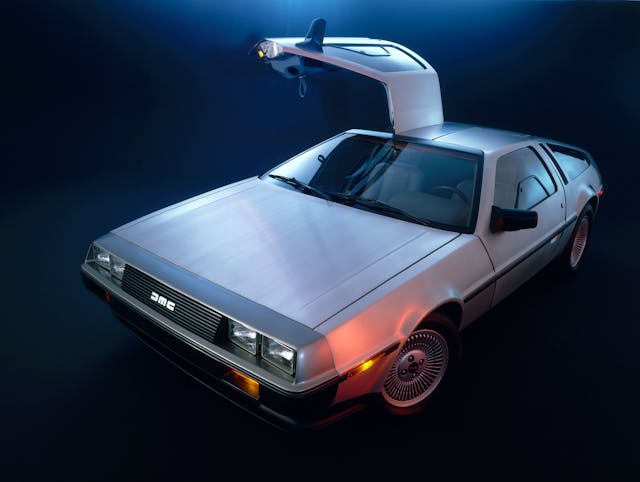
DMC lost ground in the past four years as it waited for NHTSA and the EPA to get their acts together. Suppliers bailed, proposed drivetrains aged out of EPA certification, and champions in local and state governments either lost interest or were replaced by less invested figures. Some suppliers went out of business, while others, Espey explains, “were absorbed by larger companies that don’t want to fool with low-volume projects that are going to be less than a percent of someone’s profit and 80 percent of someone’s headache.”
The initial numbers drawn up for the low-production run of DMC-12s are remaining steady. Espey says that DMC has a good working relationship with an engineering team, and he’s been very satisfied with their work. “I think they’re well-poised to take it the rest of the way,” he says. It’s largely up to them to fill the rest of holes in inventory and find suppliers to replace those who have gone by the wayside.
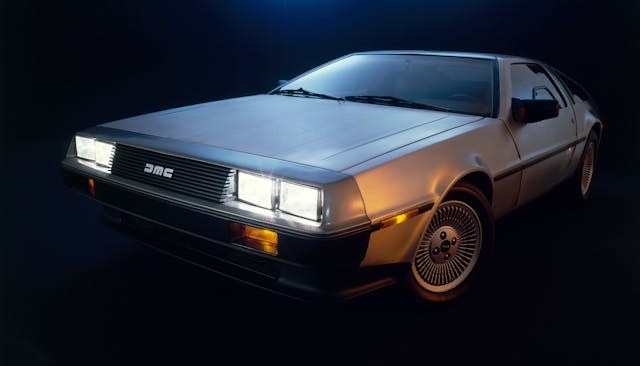
The most formidable obstacle remains the powertrain: “The single biggest line item on the bill of materials which is gonna dictate cost and price,” in Espey’s words. DMC had a letter of intent with “a major automotive manufacturer to use their engine,” but the arrangement has since evaporated. Currently, GM’s E-ROD lineup is the only available drivetrain certified for production under the LVMVA.
“I heard rumors that some of the other Detroit Three would be putting something together,” says Espey. “They occasionally showed up at meetings … but nothing’s showed up, and probably for good reason. They haven’t had any assurance that there’s gonna be a pot of gold at the end of the rainbow for them.”
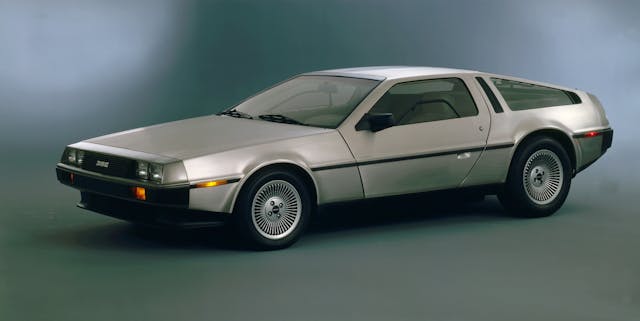
The good news is that the DeLorean name holds enduring cachet.
“I can’t think of any other car that has that kind of name recognition that hasn’t produced a car in 40 years,” says Espey. “I had a kid come up to me at a cars and coffee—he was probably a teenager—and his dad said ‘yeah, [John Z.] DeLorean got his start at Pontiac.‘ And the kid said, ‘What’s a Pontiac?” Pontiac’s barely been discontinued for 12 years; in comparison, DeLorean is something of a unicorn.
“When a new DeLorean is ready to be introduced, it’s gonna make news,” says Espey. “And if it’s powered by, oh, hypothetically, by GM, by Toyota, by Tesla—or you can pick a name at random, basically, because that’s what I’m doing—that’s going to be news.”








